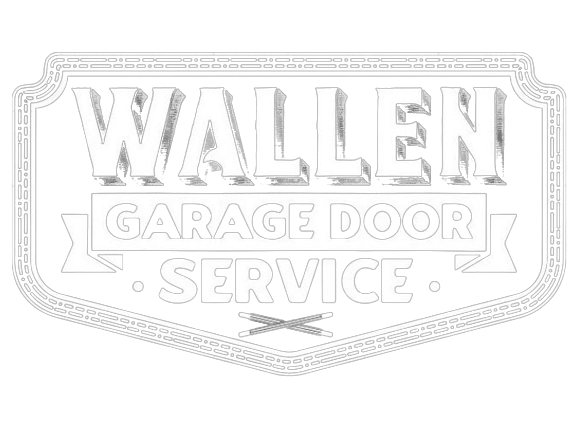Have you ever wondered what keeps your garage door running smoothly every day? It’s easy to overlook the complex system at work behind the simple action of opening and closing. However, understanding the parts of a garage door can significantly improve your ability to maintain and troubleshoot problems.
This guide will walk you through each component, explaining its function and importance. By familiarizing yourself with these elements, you can save both time and money on potential repairs and ensure that your garage door continues to operate efficiently for years to come. Let’s explore the essential parts that make up your garage door system.
Main Parts of a Garage Door
1. Door Panels
Door panels are not only fundamental for the structural integrity of a garage door but also significantly influence its aesthetic appeal. They are available in various materials each offering distinct benefits and challenges:
- Wood: Wooden panels provide a timeless, classic look that many homeowners admire. However, they require regular staining or painting to prevent decay and warping from moisture.
- Steel: Known for its strength and durability, steel is a popular choice for garage doors. Steel panels can withstand harsh weather conditions and are less susceptible to damage. However, they can be prone to rust if the paint or protective coating is damaged.
- Aluminum: This material is lighter than steel, which makes it easier to operate and less taxing on the opener and other mechanical parts. While it’s less prone to rust, aluminum can dent more easily, so it may not be the best choice for high-traffic areas where the door might be subject to impact.
2. Tracks
Tracks are critical components that guide the rollers, allowing the garage door to move up and down smoothly. They come in two main types:
- Standard Tracks: These are most commonly used in residential garage doors and have a curve that accommodates the door as it opens and closes.
- Vertical Lift Tracks: Often used in commercial settings, these tracks allow the door to rise vertically before coming to rest parallel to the ceiling, maximizing space near the door opening.
Proper installation and alignment of tracks are vital to prevent operational issues like binding or off-track accidents.
3. Rollers
Rollers ensure the smooth travel of the garage door along the tracks. They vary in material, each offering different advantages:
- Steel Rollers: These are very durable but can be noisy. They work well for heavy-duty or industrial garage doors.
- Nylon Rollers: Quieter and smoother than steel, nylon rollers are ideal for residential use where noise reduction is preferred. They generally require less maintenance since they don’t need lubrication.
Common issues with rollers include wear, misalignment, or breakage, all of which can impede the door’s operation.
4. Springs
Springs are indispensable to the operation of your garage door, enabling the heavy door to open smoothly and close safely. They counterbalance the weight of the door, storing mechanical energy when the door is closed and releasing it to assist in opening. Understanding the types of springs and their maintenance can significantly enhance your door’s performance and safety.
Types of Springs:
- Torsion Springs: These are mounted above the garage door opening and use a shaft that runs through the spring to work. Torsion springs are preferred for heavier or larger doors because they provide more control and stability during the door’s movement. They are generally more durable and safer once they break, as they tend to stay in place due to the shaft.
- Extension Springs: These springs are located on either side of the door, above the horizontal tracks. Extension springs stretch and contract as the door opens and closes. They are typically used for lighter doors and are more cost-effective but can be more hazardous if not maintained properly, as they can snap and fly off.
Understanding and maintaining the springs in your garage door system is crucial for the safety and longevity of your door. Regular checks and timely professional servicing can prevent accidents and ensure your garage door continues to function effectively.
5. Cables
Cables and pulleys are integral components of your garage door system, playing a critical role in the mechanics of opening and closing the door. These elements work in conjunction with the springs to manage the heavy lifting and lowering of the garage door smoothly and safely. Understanding their function, recognizing common wear and tear issues, and implementing regular maintenance can significantly prolong their lifespan and enhance the overall operation of your garage door.
Role of Cables and Pulleys in the System:
- Cables: These are attached to the bottom of the door and run through the pulleys, extending to the springs. As the door opens, the cables wind and unwind around the pulley system, helping to lift and lower the door efficiently. The cables bear a significant amount of tension and are crucial for balancing the door.
- Pulleys: Pulleys are wheel-like parts that work with the cables and springs. They help reduce the force needed to move the door and ensure smoother operation. Pulleys are typically found at the end of the tracks or near the springs.
Common Wear and Tear Issues:
- Frayed Cables: Cables can fray from constant tension and movement, and they might snap, posing safety risks.
- Worn Pulleys: Pulleys may wear out from continuous use and stress, which can cause uneven lifting of the door and strain on the cables.
6. Opener
A garage door opener is a motorized device that automatically opens and closes your garage door. It comes with a remote control for convenient and secure operation from a distance. Knowing how your garage door opener works and the different types available can help you select the best one for your needs and ensure it functions safely and effectively.
Garage door openers are typically mounted in the center of the garage ceiling and use a track system connected by chains, belts, or screws to lift the door. The motor triggers a mechanism to move the door, while counterbalance springs help lighten the door’s weight for smoother movement.
Types of Openers:
- Belt Drive: Uses a rubber belt to open and close the door quietly, ideal for garages near living areas. It offers smooth operation which reduces wear on the opener.
- Chain Drive: Employs a chain to move the door, known for durability and strength, suitable for heavier doors but noisier than belt drives.
- Screw Drive: Uses a threaded steel rod to operate the door, quieter than chain drives but noisier than belt drives, with fewer moving parts requiring less maintenance but may be less reliable in extreme temperatures.
Important Features:
- Remote Control: Uses secure codes to operate the door, often with rolling code technology that changes the code each time to prevent unauthorized access.
- Automatic Reverse: Reverses the door if it hits an obstruction to prevent injuries or damage.
- Manual Release: Allows manual operation of the door during power outages.
- Security Lights: Built-in lights enhance visibility and security when the door operates.
Choosing the right type of opener and maintaining it well, along with updating security settings, ensures your garage door system is safe and efficient.
7. Sensors
Modern garage doors are equipped with advanced sensors and safety features designed to protect users and their property. These mechanisms are crucial for preventing accidents and ensuring the door operates safely and reliably. Understanding how these features work, why regular testing is essential, and how to troubleshoot common problems can help you maintain a safe and functional garage door.
Motion Sensors and Automatic Reversal Mechanisms:
- Motion Sensors: These are typically installed near the base of the door on both sides. They use infrared technology to detect any object or movement in the path of the door. If anything interrupts the beam while the door is closing, the motion sensors will automatically trigger the door to stop and reverse direction to prevent any potential accidents.
- Automatic Reversal Mechanisms: This safety feature is built into the door opener. It engages when the door encounters physical resistance that might indicate an obstruction. Like the motion sensors, this mechanism will reverse the door’s direction if it hits something on the way down, providing an additional layer of safety.
Regularly testing your garage door’s safety features, like the motion sensors and automatic reversal mechanism, is crucial. Test these monthly by placing an object, like a piece of wood, under the door as it closes. If the door doesn’t reverse upon contact, it needs adjustment or repair for safety.
Common Problems and Troubleshooting Tips:
- Sensor Misalignment: If the door reverses randomly or won’t close, check the alignment of the sensors and ensure nothing is blocking them.
- Dirty Sensors: Clean any dust or debris from the sensor lenses with a soft cloth and mild cleaner to maintain accuracy.
- Sensitivity Adjustments: If the door reverses too easily or not at all, adjust the force settings on your opener using a screwdriver, following the manufacturer’s instructions.
Regular maintenance and addressing issues promptly will keep your garage door functioning safely and effectively.
8. Hinges and Brackets
These metal components are crucial for the door’s movement and structural integrity:
- Hinges: Allow the panels to bend as the door rolls up.
- Brackets: Secure the tracks to the garage’s frame and support the door’s weight.
Wear, rust, or damage to these parts can significantly affect the door’s operation and safety.
Understanding these parts and their function can help homeowners maintain their garage doors effectively, ensuring long-term reliability and safety.
Additional Accessories and Features of Garage Doors
1. Weather Sealing
Weather sealing is a crucial component for enhancing the energy efficiency of your garage and protecting it from the elements. It involves installing seals around the door edges and between the door panels to prevent drafts, moisture, dirt, and pests from entering the garage. This sealing is particularly important in regions that experience extreme weather conditions, as it helps to maintain a stable temperature inside the garage, reducing the load on heating and cooling systems and consequently lowering energy costs.
2. Windows
Incorporating windows into garage doors can enhance natural light and improve the aesthetic appeal of your home’s exterior. When choosing windows for your garage door, consider their placement, material, and design to match your home’s style. The benefits of adding windows include increased visibility and light inside the garage, which can make the space more usable. However, it’s important to consider the potential security risks and loss of insulation that windows may introduce and opt for reinforced or double-pane glass to mitigate these issues.
3. Handles and Locks
For manual garage doors, handles and locks are essential safety and security features. Handles allow for easier manual operation of the door, while locks provide security against unauthorized access. It is important to choose sturdy, durable handles and locks that can withstand the elements and potential wear from frequent use. Additionally, ensuring that these components are properly installed and maintained is key to their functionality and the overall security of your garage door.
Understanding and choosing the right accessories and features can significantly enhance the functionality, security, and efficiency of your garage door system.
FAQs of the Parts of a Garage Door
1. What is the most commonly replaced part of a garage door?
The most frequently replaced parts of a garage door are the springs, particularly torsion springs. Due to the high tension they operate under, springs wear out over time and can break, necessitating replacement to ensure the door operates smoothly and safely.
2. How often should garage door parts be serviced or replaced?
Garage door parts should be serviced annually to ensure optimal performance and safety. During a service appointment, a professional will check all parts for wear and tear, lubricate moving components, and make adjustments as needed. Replacement intervals can vary; for example, springs may need replacing every 5 to 7 years, depending on usage, while rollers and cables might last longer.
3. Can I replace parts of my garage door myself, or should I call a professional?
While some minor maintenance tasks, such as lubricating moving parts, can be performed by homeowners, replacing components like springs, cables, and rollers is best left to professionals. These parts are under high tension and can pose significant safety risks if not handled correctly. Calling a professional ensures that the replacement is done safely and effectively.
4. What are the signs that my garage door parts need attention?
Signs that your garage door parts may need attention include unusual noises during operation (such as grinding or squeaking), the door moving unevenly or jerking, and increased difficulty in opening or closing the door. Visible wear on parts like cables or springs, or any signs of rust or damage, also indicates the need for inspection and possibly replacement.
5. Are there universal parts for garage doors, or do I need brand-specific components?
While some garage door parts are universal, such as certain types of rollers or hinges, other components, like springs, cables, and openers, may be brand-specific. It’s important to check the specifications of your garage door system or consult with a professional to ensure you get the correct parts for repairs and replacements.
Conclusion
Understanding the various parts of a garage door is essential for any homeowner who wants to ensure their system functions efficiently and safely. Knowing these components can help you identify early signs of wear and address issues before they escalate into costly repairs. Regular maintenance and timely servicing of these parts not only extend the life of your garage door but also enhance its performance and safety.
Regular check-ups are essential for maintaining the longevity and functionality of your garage door. Scheduling professional maintenance at least once a year can help preserve the mechanical integrity of the door, ensure safety mechanisms are functioning correctly, and keep the door operating smoothly. Professionals can also provide insights and recommendations specific to your door’s model and usage pattern, which can further enhance its operation and durability.
Taking proactive steps to maintain your garage door not only safeguards your investment but also protects your family by preventing unexpected malfunctions and accidents. So, remember to keep an eye on the condition of each part and engage with professionals who can help you maintain your garage door in top condition. This way, you can enjoy the benefits of a secure and fully functional garage door for years to come.
For residents of Hampton Roads, VA, Wallen Garage Door Repair and Installation Services stands out as a trusted partner for all your garage door needs. With a reputation for expertise and reliability, Wallen provides comprehensive garage door services, from routine maintenance to complete installations. Their team of skilled professionals is equipped to handle any issue, ensuring your garage door remains in the best possible condition. Consider Wallen Garage Door Repair and Installation Services for dependable support and expert solutions.







